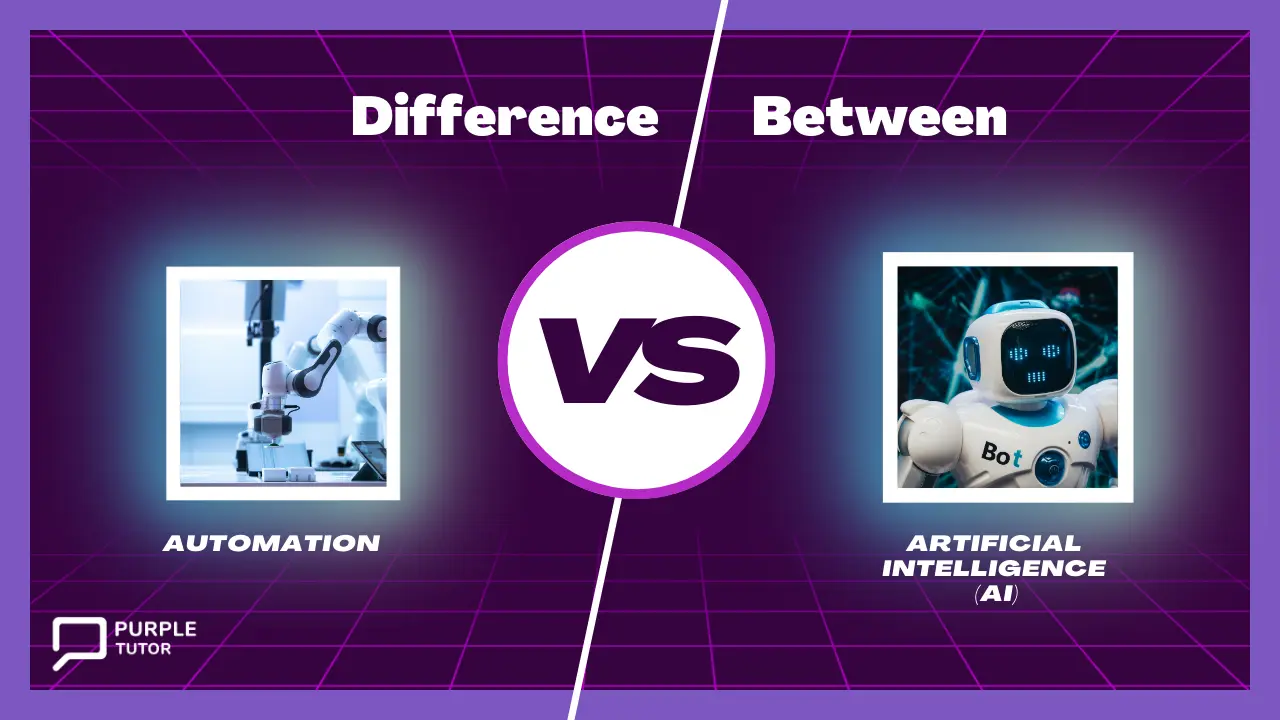What is an Automation?

Automation refers to the use of technology, machines, or systems to perform tasks or processes with minimal human intervention. It involves the creation and deployment of systems that can operate and complete predefined actions or workflows without continuous manual input. The goal of automation is to streamline operations, increase efficiency, reduce errors, and minimize the need for human effort.
Automation can be applied across various industries and sectors, including manufacturing, logistics, healthcare, finance, and information technology. It often involves the use of specialized software, robotics, machinery, or a combination of these tools.
- Involves the use of technology and machines to perform tasks or processes with minimal human intervention.
- Streamlines operations, increases efficiency, reduces errors, and minimizes human effort.
- Relies on predefined rules and instructions to execute tasks accurately and consistently.
- Does not possess the ability to learn or adapt based on new information or experiences.
- Typically involves the use of specialized software, robotics, or machinery in various industries.
- Examples include automated assembly lines in manufacturing or automated testing tools in software development.
What is Artificial Intelligence (AI)?
Artificial Intelligence (AI) refers to the simulation of human intelligence in machines, enabling them to perform tasks that typically require human intelligence. It involves the development of computer systems and algorithms that can learn, reason, analyze data, make decisions, and solve complex problems. AI aims to replicate human cognitive abilities and provide machines with the capability to understand, interpret, and respond to the world around them.
- Refers to the simulation of human intelligence in machines.
- Aims to replicate human cognitive abilities, such as learning, reasoning, and decision-making.
- Analyzes and interprets data, extracts meaningful insights, and adapts behavior based on information received.
- Utilizes algorithms designed to learn from data and experience.
- Enables machines to understand natural language, recognize patterns, and solve complex problems.
- Applications of AI include natural language processing, computer vision, autonomous vehicles, and recommendation systems.
Automation Vs Artificial Intelligence
| Aspect | Automation | |
| Function | Performs tasks with minimal human intervention | Simulates human intelligence in machines |
| Objective | Streamline operations, increase efficiency, reduce errors | Replicate human cognitive abilities, enable machines to learn and reason |
| Decision-making | Follows predefined rules and instructions | Learns from data and experiences, makes decisions based on insights |
| Adaptability | Limited adaptability to new information or experiences | Adapts and improves performance over time through learning |
| Task Complexity | Efficient for repetitive and rule-based tasks | Capable of handling complex problems and tasks |
| Learning | Does not possess learning capabilities | Learns from data and experiences to improve performance |
| Examples | Robotic assembly lines, automated testing tools | Natural language processing, image recognition, autonomous vehicles |
| Key Technologies | Specialized software, robotics, machinery | Machine learning, deep learning, natural language processing |
| Scope | Narrow in focus, specific tasks or processes | Broader scope, encompassing various cognitive abilities |
While automation and artificial intelligence have overlapping goals of increasing efficiency and reducing human effort, they differ in their approach and capabilities. Automation focuses on streamlining operations and minimizing human intervention in specific tasks, relying on predefined rules. AI, on the other hand, aims to replicate human intelligence and decision-making, learning from data and experiences to solve complex problems.
Relationship between Automation and Artificial Intelligence
- Automation can be enhanced through the integration of AI technologies.
- AI can enable automation systems to make intelligent decisions, adapt to new situations, and handle complex tasks.
- AI-powered automation can improve efficiency, accuracy, and decision-making in various industries.
- For example, AI algorithms can analyze large amounts of data in real-time to optimize automated processes and make informed decisions.
It’s worth noting that automation and AI are not mutually exclusive. In fact, AI technologies often enhance and complement automation systems, adding intelligence and adaptability to automate processes. Combining automation and AI can result in more advanced and efficient systems, capable of learning from data, making informed decisions, and handling complex tasks.
Conclusion
In summary, automation focuses on the use of technology to perform tasks with minimal human intervention, relying on predefined rules and instructions. AI, on the other hand, aims to replicate human intelligence, enabling machines to learn, reason, and make decisions based on data and experience. While automation streamlines processes, AI adds intelligence, adaptability, and decision-making capabilities to the automation systems, leading to more advanced and efficient operations.
Frequently Asked Questions (FAQs)
1. Can I try a free class?
A: Yes. the first demo class is free of charge. You can book the free class from the booking link.
2. Is the coding course schedule flexible?
A: The courses for kids are flexible. You can select any time and any day that works around your child’s schedule.
3. How do I know what coding course is right for my kid?
A: The teachers assess the level of the student in the demo class based on which the course is suggested.
4. Will my child receive a certificate?
A: Students get certificated after completion of each course. The certificate recognises the skills the student learnt and the level of mastery achieved.
5. What do you require to learn coding from Purple Tutor?
A: You need a laptop/computer with a webcam and a stable internet connection.
